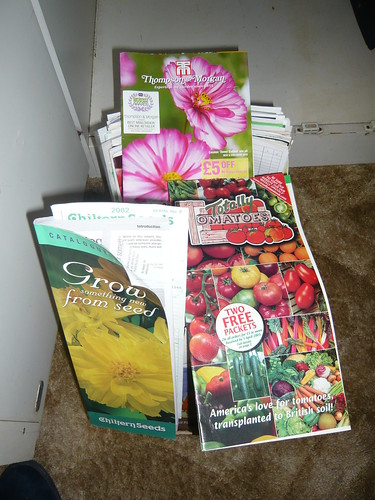Seed Storage Our Best Tips
‘Fresh is best’ particularly when it come to seeds. However if you have a surplus of seed that you can’t sow immediately they should be stored in a moisture proof container at a low temperature. A fridge compartment is ideal.
Storing Seed
- Although the majority of seed will remain viable for a year or two, when kept at room temperature, cold storage extends the life considerably.
- Never store seeds in a greenhouse or garden shed. The high temperature and humidity can kill off the seed in a matter of weeks.
- Seeds in foil wrappers should be left unopened until ready for sowing.
- Seed from seed exchanges or collected from your own garden should be sown as soon as practical. (Tender plants may need to wait until March-May)
- Parsnip seed is not suitable for storing, it needs sowing in the first year.
- Curcurbits (cucumber and courgettes) will remain viable as seeds for 5-7 years
- Beware old seed from shops that may also have got too warm. Faded packets, slow sales levels and close use by dates are tell tale signs.
Buy a special seed storage box from amazon for less than £10 or the Burgon and Ball Seed Packet Organiser £19.95
Seed Storage Banks
Kew have a worldwide reputation for seed storage. They divide seed into classes:
- Orthodox seeds can be dried, without damage, to low moisture contents, usually much lower than those they would normally achieve in nature. Over a wide range of storage environments their longevity increases with reductions in both moisture content and temperature, in a quantifiable and predictable way.
- Recalcitrant seeds do not survive drying to any large degree, and are thus not amenable to long term storage, although the critical moisture level for survival varies among species. In this database this category includes those seeds, of some aquatic species in particular, described as viviparous.
- Intermediate seeds are more tolerant of desiccation than recalcitrants, though that tolerance is much more limited than is the case with orthodox seeds, and they generally lose viability more rapidly at low temperature. They do not conform to all the criteria defining orthodox seeds, especially in respect of the quantification and predictability of the relations between longevity and both drying and cooling.
Read more about seed storage behaviour on Kew.org. Kew run the Millenium Seed Bank project aiming to save 25% of the most endangered plant species. They also run an innovative seed adoption service and a Difficult Seed data base.

2 thoughts on “Seed Storage Our Best Tips”
Comments are closed.